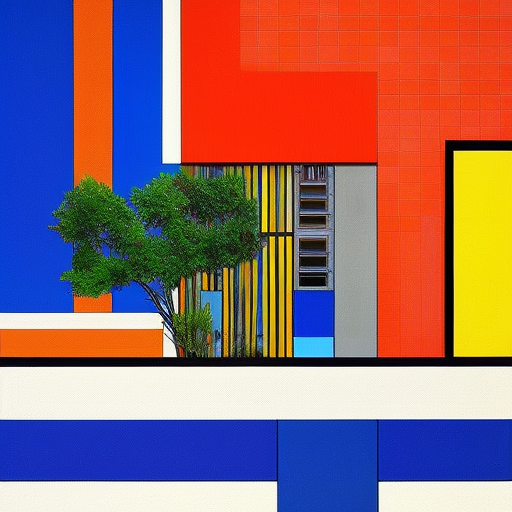Summary:
De Stijl, meaning “The Style” in Dutch, was an influential art movement that emerged in the early 20th century. Led by artists such as Piet Mondrian and Theo van Doesburg, De Stijl aimed to create a new visual language that reflected the modern age. Characterized by geometric forms, primary colors, and a focus on abstraction, De Stijl had a profound impact on art, design, and architecture.
Origins and Key Figures:
De Stijl was founded in 1917 by Theo van Doesburg, a Dutch artist and writer. Van Doesburg sought to unite artists who shared a common vision of creating a new artistic style that rejected traditional forms and embraced the principles of abstraction and simplicity. One of the key figures associated with De Stijl was Piet Mondrian, whose iconic grid-based paintings became synonymous with the movement. Other important artists involved in De Stijl included Bart van der Leck, Gerrit Rietveld, and Vilmos Huszár.
Principles and Aesthetics:
At the core of De Stijl was the belief in the harmony of form and function. Artists sought to create a universal visual language that could be applied to various art forms, including painting, sculpture, architecture, and design. The movement embraced a reductionist approach, using only primary colors (red, blue, and yellow) and non-colors (black, white, and gray), as well as horizontal and vertical lines and geometric shapes. The aim was to achieve a sense of balance, order, and harmony.
Impact on Art and Design:
De Stijl had a significant impact on the development of modern art and design. Its influence extended beyond the visual arts and permeated into architecture, typography, and furniture design. The movement’s principles of simplicity, abstraction, and functionality can be seen in the works of artists and designers such as Le Corbusier, Frank Lloyd Wright, and the Bauhaus school. De Stijl’s emphasis on geometric forms and primary colors also laid the groundwork for the later development of abstract expressionism and minimalism.
Architecture and Design:
De Stijl had a profound influence on architecture and design. Gerrit Rietveld, a member of the movement, designed the iconic Red and Blue Chair, which exemplified the principles of De Stijl through its use of geometric forms and primary colors. Rietveld also collaborated with Van Doesburg on the design of the Schröder House, a groundbreaking example of modernist architecture that embraced the ideals of De Stijl. The movement’s influence can be seen in the clean lines, simplicity, and functionality of modernist architecture and design.
Legacy and Influence:
De Stijl’s impact can still be felt in contemporary art and design. Its emphasis on simplicity, abstraction, and functionality continues to inspire artists and designers around the world. The movement’s principles have been adapted and reinterpreted in various ways, from the minimalist sculptures of Donald Judd to the graphic design of the Swiss Style. De Stijl’s legacy is a testament to the enduring power of its ideas and its lasting contribution to the development of modern art and design.
In conclusion, De Stijl was a groundbreaking art movement that sought to create a new visual language for the modern age. Through its emphasis on simplicity, abstraction, and functionality, De Stijl had a profound impact on art, design, and architecture. Its principles continue to inspire and influence artists and designers to this day, making it one of the most important movements in the history of modern art.












